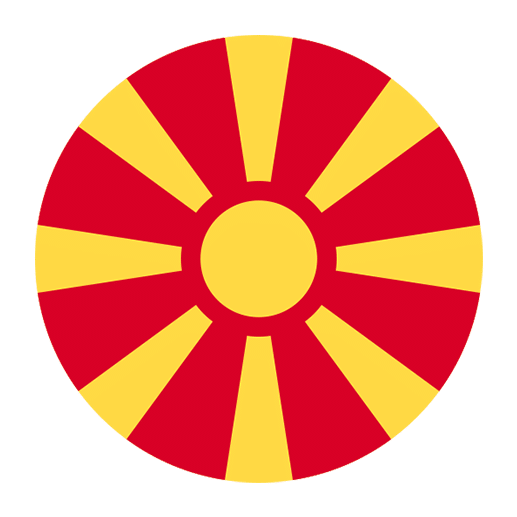Learning a new language is always an intriguing journey, and for those interested in the South Slavic languages, understanding the nuances and distinctions between them can be both challenging and rewarding. Among these languages, Macedonian stands out due to its unique characteristics and historical development. This article delves into the specific ways Macedonian differs from other South Slavic languages such as Bulgarian, Serbian, Croatian, and Slovenian. By exploring these differences, learners can gain a clearer understanding of Macedonian’s linguistic identity and its place in the South Slavic language family.
Historical Context and Evolution
To fully appreciate the distinctions between Macedonian and other South Slavic languages, it is essential to consider the historical context in which these languages evolved. The South Slavic languages are part of the larger Slavic language family, which itself is a branch of the Indo-European language family. The South Slavic group specifically includes languages such as Bulgarian, Macedonian, Serbian, Croatian, Bosnian, Montenegrin, and Slovenian.
The development of Macedonian as a distinct language is closely tied to the region’s complex history. The area now known as North Macedonia has been influenced by various empires and cultures, including the Byzantine Empire, the Ottoman Empire, and the Slavic migrations. These historical influences have contributed to the unique features of the Macedonian language.
The Role of the Ottoman Empire
One significant factor in the evolution of Macedonian is the influence of the Ottoman Empire, which ruled the region for several centuries. During this period, the local dialects were heavily influenced by Turkish, resulting in the incorporation of numerous Turkish loanwords into the Macedonian lexicon. This influence is less pronounced in other South Slavic languages like Slovenian and Croatian, which were not under Ottoman rule for as long or as intensely as the Macedonian region.
Codification and Standardization
Another critical aspect is the relatively recent codification and standardization of the Macedonian language. Unlike Serbian or Croatian, which have longer histories of written standards, Macedonian was officially codified in the mid-20th century. This process was influenced by the political and cultural movements of the time, particularly the desire to establish a distinct Macedonian identity separate from Bulgarian and Serbian influences. The codification of Macedonian involved selecting specific dialectal features to form the basis of the standard language, further distinguishing it from its South Slavic neighbors.
Phonological Differences
One of the most noticeable differences between Macedonian and other South Slavic languages lies in their phonological systems. While all South Slavic languages share certain phonetic traits, Macedonian has distinct features that set it apart.
Vowel System
Macedonian has a five-vowel system (a, e, i, o, u), which is relatively straightforward compared to some other South Slavic languages. For example, Slovenian has a more complex vowel system with additional diphthongs and vowel length distinctions. This simplicity in the vowel system can make Macedonian somewhat easier to learn for beginners.
Consonant System
The consonant system in Macedonian also has unique characteristics. One notable feature is the presence of the voiced palatal fricative /ʒ/ (as in the English “measure”) and the voiced postalveolar affricate /dʒ/ (as in the English “judge”). These sounds are not found in all South Slavic languages. For instance, Serbian and Croatian lack the /ʒ/ sound, while Bulgarian has a similar /ʒ/ sound but uses it differently.
Another distinctive feature is the presence of the phoneme /x/ (as in the Scottish “loch” or German “Bach”), which is common in Macedonian but less prevalent in languages like Serbian and Croatian. This sound can pose a challenge for learners who are not familiar with it from their native languages.
Grammar and Morphology
Grammar and morphology are areas where Macedonian exhibits several unique features compared to other South Slavic languages. These differences can significantly impact the way learners approach the language.
Definite Articles
One of the most distinctive grammatical features of Macedonian is its use of postpositive definite articles, which are attached to the end of nouns. Macedonian has three forms of the definite article, indicating the position of the noun in relation to the speaker: -от (ot) for specificity, -ов (ov) for proximity, and -он (on) for distance. For example, “стол” (stol, “chair”) becomes “столот” (stolot, “the chair”), “столов” (stolov, “this chair”), or “столон” (stolon, “that chair”). This system is unique to Macedonian and is not found in other South Slavic languages, making it a distinctive feature of the language.
Case System
Macedonian has significantly simplified its case system compared to other South Slavic languages. While languages like Serbian, Croatian, and Slovenian have retained a more extensive system of grammatical cases (nominative, genitive, dative, accusative, locative, instrumental, and vocative), Macedonian has reduced its case system to primarily using the nominative case, with some vestiges of the vocative case for addressing people directly. This simplification can make learning Macedonian grammar easier for learners who may struggle with the complex case systems of other South Slavic languages.
Verb Conjugation
Verb conjugation in Macedonian also exhibits unique characteristics. Macedonian verbs are conjugated for tense, mood, and aspect, similar to other South Slavic languages. However, Macedonian has a more simplified aspect system, distinguishing primarily between perfective and imperfective aspects. Additionally, the future tense in Macedonian is formed using the auxiliary verb “ќе” (kje) followed by the present tense of the main verb, such as “ќе одам” (kje odam, “I will go”). This construction is different from the future tense formation in Serbian and Croatian, which use the auxiliary verb “ću” (in Serbian) or “ću” (in Croatian) combined with the infinitive of the main verb.
Vocabulary and Lexicon
The vocabulary and lexicon of Macedonian also show significant differences from other South Slavic languages, influenced by historical, cultural, and geographical factors.
Loanwords and Influences
As mentioned earlier, the long period of Ottoman rule left a lasting impact on the Macedonian vocabulary, resulting in the incorporation of numerous Turkish loanwords. Words like “ќебап” (kebap, “kebab”), “чаршија” (charshija, “market”), and “ќуфте” (kufte, “meatball”) are examples of Turkish influence on Macedonian. While other South Slavic languages, particularly Serbian and Bosnian, also have Turkish loanwords, the extent and nature of this influence can differ.
Macedonian has also borrowed words from neighboring languages such as Greek and Albanian, reflecting the region’s diverse linguistic landscape. For instance, the word “џам” (džam, “glass”) is borrowed from Greek, while “кула” (kula, “tower”) comes from Albanian. These borrowings add to the distinctiveness of the Macedonian lexicon.
False Friends
False friends, or words that look similar but have different meanings in different languages, can pose challenges for language learners. Macedonian has several false friends when compared to other South Slavic languages. For example, the Macedonian word “врата” (vrata) means “door,” while in Serbian and Croatian, “vrata” means “gate.” Similarly, the Macedonian “брат” (brat) means “brother,” while in Slovenian, “brat” means “feast” or “celebration.” These differences highlight the importance of context and careful attention to vocabulary when learning Macedonian.
Sociolinguistic Considerations
In addition to linguistic features, sociolinguistic factors play a crucial role in distinguishing Macedonian from other South Slavic languages. These factors include language policy, identity, and the role of the language in society.
Language and Identity
The development of a distinct Macedonian identity has been closely tied to the establishment of the Macedonian language. Throughout history, the region has experienced various political and cultural influences, leading to debates over the status and identity of the Macedonian language. The codification of Macedonian in the mid-20th century was a significant step in asserting a separate Macedonian identity, distinct from Bulgarian and Serbian influences. This sense of linguistic and cultural identity is an essential aspect of the Macedonian language and contributes to its unique character.
Language Policy and Education
Language policy and education also play a crucial role in shaping the linguistic landscape of a region. In North Macedonia, the Macedonian language is the official language and is used in government, education, media, and daily life. The promotion of the Macedonian language in education and public life has helped to strengthen its status and ensure its continued use.
In contrast, other South Slavic languages like Serbian, Croatian, and Bosnian are used in countries with different language policies and educational systems. For example, in Bosnia and Herzegovina, all three languages (Bosnian, Croatian, and Serbian) are officially recognized and used in different regions and institutions. This multilingual environment presents unique challenges and opportunities for language learners.
Conclusion
Understanding the differences between Macedonian and other South Slavic languages can provide valuable insights for language learners and enthusiasts. The historical context, phonological features, grammar and morphology, vocabulary, and sociolinguistic factors all contribute to the distinctiveness of the Macedonian language. By exploring these differences, learners can gain a deeper appreciation for the rich linguistic diversity of the South Slavic language family and the unique characteristics of Macedonian.
Whether you are a beginner looking to learn Macedonian or an experienced language learner exploring the South Slavic languages, recognizing and appreciating these distinctions can enhance your language learning journey. Embrace the unique features of Macedonian, and you will find yourself on a rewarding path to mastering this fascinating and distinct language.

